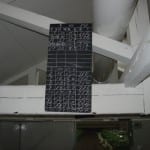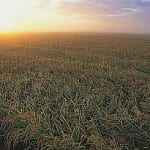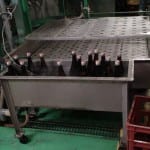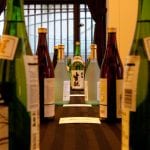Note to readers: Just a few days after this newsletter was sent out, the government finished its open hearing, and it became official: Yamagata Sake has been granted bona fide Geographical Indication, the first entire prefecture to do that in the sake world. Congratulations to them!
The Sake of Yamagata Prefecture
…and its move toward bona fide Geographical Indication
 Several years ago, in July of 2014, the Yamagata Prefecture Sake Brewers’ Association began the process of securing a designation of their sake as a Geographical Indication recognized by the World Trade Organization and various international treaties. In order to qualify for something like this, a product (any product applying for a GI) must possess qualities or a reputation that are due to that origin. Securing such a designation gives the region and its producers the exclusive right to an appropriate indication on the label.
Several years ago, in July of 2014, the Yamagata Prefecture Sake Brewers’ Association began the process of securing a designation of their sake as a Geographical Indication recognized by the World Trade Organization and various international treaties. In order to qualify for something like this, a product (any product applying for a GI) must possess qualities or a reputation that are due to that origin. Securing such a designation gives the region and its producers the exclusive right to an appropriate indication on the label.
Japan’s National Tax Administration (“NTA”), the branch of the government overseeing sake, opened a  public hearing on the topic on October 19 of this year. It was not made clear how long this stage will take, but assuming it does pass smoothly, Yamagata Sake will come into existence as a bona fide Geographical Indication (GI) for sake. One more region in Japan, the city of Hakusan in Ishikawa Prefecture, has qualified for a GI for the sake of that region. However, it only applies to the five breweries in city of Hakusan; the rest of the breweries in Ishikawa Prefecture are unaffected. Yamagata Prefecture will be the first entire prefecture to secure this distinction.
public hearing on the topic on October 19 of this year. It was not made clear how long this stage will take, but assuming it does pass smoothly, Yamagata Sake will come into existence as a bona fide Geographical Indication (GI) for sake. One more region in Japan, the city of Hakusan in Ishikawa Prefecture, has qualified for a GI for the sake of that region. However, it only applies to the five breweries in city of Hakusan; the rest of the breweries in Ishikawa Prefecture are unaffected. Yamagata Prefecture will be the first entire prefecture to secure this distinction.
This will follow the NTA’s designation of “Japanese Sake” and “Nihonshu” for sake brewed in Japan, which were recognized December 25, 2015. In total, there are currently seven alcoholic beverage GI designations in Japan, other five applying to wine or shochu. Yamagata would be the eighth.
Once complete, the Yamagata Brewers’ Association will oversee things, and indications are that they will create a graphic image indicating the Yamagata GI for use by the 51 brewers in the prefecture.
Here is a bit more about the sake of this great region.
Yamagata prefecture lies packaged at a somewhat awkward angle in the lower left-hand corner of the Tohoku region. Surrounded by mountains but with a stretch open to the Japan Sea, it looks like it was designed specifically to absorb the cold and snow.
 There are at present 51 sakagura brewing in Yamagata. The oldest of these dates back to the Japanese “Warring States” era of long civil war, while the youngest can trace their roots to the beginning of the Edo period. Even the new kid in town is an old and dignified character.
There are at present 51 sakagura brewing in Yamagata. The oldest of these dates back to the Japanese “Warring States” era of long civil war, while the youngest can trace their roots to the beginning of the Edo period. Even the new kid in town is an old and dignified character.
Most of these are smallish, traditional kura. While there are a couple of large-ish brewres, automation and computers, for all their cons, pros, advocates and foes in the brewing world, are certainly not unheard of up here, but they seem to be the exception and not the rule.
Those mountains and that big pond seem to have kept things all in the family for a good number of centuries. A great deal of the sake consumed in Yamagata is made there, and a comparatively small amount of what is brewed there leaves the prefecture, oh pity of pities.
To the southwest lies Niigata in all its brewing glory, and not too far to the northeast sits Iwate. Both prefectures are the home of a “toji ryuha,” or guild of master brewers, known as the Echigo Toji and Nanbu Toji respectively.
Despite this proximity to easily accessible experience, Yamagata has long handled things by themselves. In other words, the master brewer at most of the kura inYamagata are not from the major guilds in the nearby regions, but rather were “raised” inside the prefecture.
There is great cooperation amongst the kura in Yamagata with respect to education and training of these “home-grown toji.” In an interesting contrast to the sake-brewing sphere of most prefectures, ninety percent of the “kurabito” (brewery workers) are indigenous Yamagata locals. This spares them the long winters far from home historically so common among the brewing staff of the sake industry. Furthermore, there are a great number of kura not even adhering to the semi-feudal toji system.
The climate is ideal (read: cold and snowy) for brewing. Sake-slaying bacteria don’t exactly thrive at these temperatures. What does thrive, however, are several strains of wonderful sake rice that almost seems to challenge and sneer at the harshly cold weather. Much of the sake brewed here is made with such fine sake rice strains. These include Miyama Nishiki, Kame no O, Dewa Sansan, Dewa no Sato, and a handful of other Yamagata-only sake rice types as well.
The type of sake found here is in general relatively light and clean, often (but not always) with a good sturdy acid presence. But perhaps more than any other prefecture, much of the sake here seems to have an abundance of personal character and individuality. There seems to be plenty of uniquely distinct yet almost magically balanced sake. Having said that, the term that the prefecture promoted and that the NTA embraced in defining the qualities associated with the sake of the region was やわらかくて透明感のある酒質, yawarakakute tomeikan no aru shushitsu, or “sake with softness and clarity.”
The Brewers’ Association web page, found here and only in Japanese, refers to the region as “Ginjo Okoku,” or “The Empire of Ginjo-shu,” alluding to the extremely high ratio of sake brewed there that is ginjo-shu, especially when compared to that of other prefectures.
On the whole, the prefecture is active in continuing to improve their skills and the quality of their product. There are several strains of Yamagata-only yeast, as well as a special strain of koji developed in the region as well.
All of this combines to make Yamagata Prefecture a leader amongst the six prefectures of the Tohoku region, the northeastern part of Japan that has garnered great attention in the sake world over the last decade or so.
The granting of Yamagata Sake as a bona fide GI will certainly further the region’s efforts to convey to the rest of the world just how good their sake is.
~~~~~~~~~~~~~~~~~~~~~~~~~~~~~~~~~~~~~~~~~~~~~~~~
Sake Professional Course in San Francisco, April 3 ~ 5, 2017
 From Monday, April 3 until Wednesday April 5, I will hold the first Sake Professional Course of 2017 at Bentley Reserve in San Francisco. If interested, for more information please send me an email at sakeguy@gol.com.
From Monday, April 3 until Wednesday April 5, I will hold the first Sake Professional Course of 2017 at Bentley Reserve in San Francisco. If interested, for more information please send me an email at sakeguy@gol.com.




